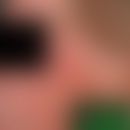Synonym(s)
HistoryThis section has been translated automatically.
DefinitionThis section has been translated automatically.
Chitosan (from Greek chiton = undergarment, shell, carapace) also called poly-D-glucosamine or polyglucosamine, is a naturally occurring polyaminosaccharide (can also be produced industrially) derived from chitin.
On the one hand, the substance obtained from chitin from crab shells stimulates the immune system, has antibacterial, moisture-regulating and hemostatic effects. From this derives its possible use in wound healing and hemostasis.
Chitosan is already used in plant protection to increase the growth and resistance of plants.
Chitin is the second most abundant polysaccharide after cellulose, to which it is structurally similar as a polymer of N-acetylglucosamine. Chitosan is formed by splitting off the acetyl groups from the chitin molecule with alkalis (alkaline hydrolysis). Chitosan occurs naturally in some fungi. Its free amino groups make it easy to form useful interactions with other substances. Chitosan is non-toxic, antibacterial, antiviral. Allergologically, the polyaminosaccharide is harmless.
You might also be interested in
General informationThis section has been translated automatically.
- Colorless, amorphous, viscous substance.
- Used as a filter material and as a food supplement.
- A study with different concentrations showed wound healing promoting effects and optimization of an antifungal therapy in the mucosal area.
- Chitosan polymers could be used as carriers for siRNA (see also Polymer-based transport systems).
Note(s)This section has been translated automatically.
The biodegradability of chitosan and chitin opens up further application possibilities in medicine, pharmacy and cosmetics. Chitosan is used in both hair and skin care. Chitosan is a film former on skin, hair and on nails. As an additive in skin care products it promotes the moisture binding capacity of the skin. It is particularly suitable for the care of dry and brittle skin.
Chitosan derivatives used in cosmetic products:
LiteratureThis section has been translated automatically.
- Burkatovskaya M et al (2006) Use of chitosan bandage to prevent fatal infections developing from highly contaminated wounds in mice. Biomaterials 27: 4157-4164
- Felipe LO et al. (2018) Lactoferrin, chitosan and Melaleuca alternifolia-natural products that show promise in candidiasis treatment. Braz J Microbiol. 49:212-219.
- Jiménez-Gómez CP et al. (2020) Chitosan: A Natural Biopolymer with a Wide and Varied Range of Applications. Molecules. 25:3981.





